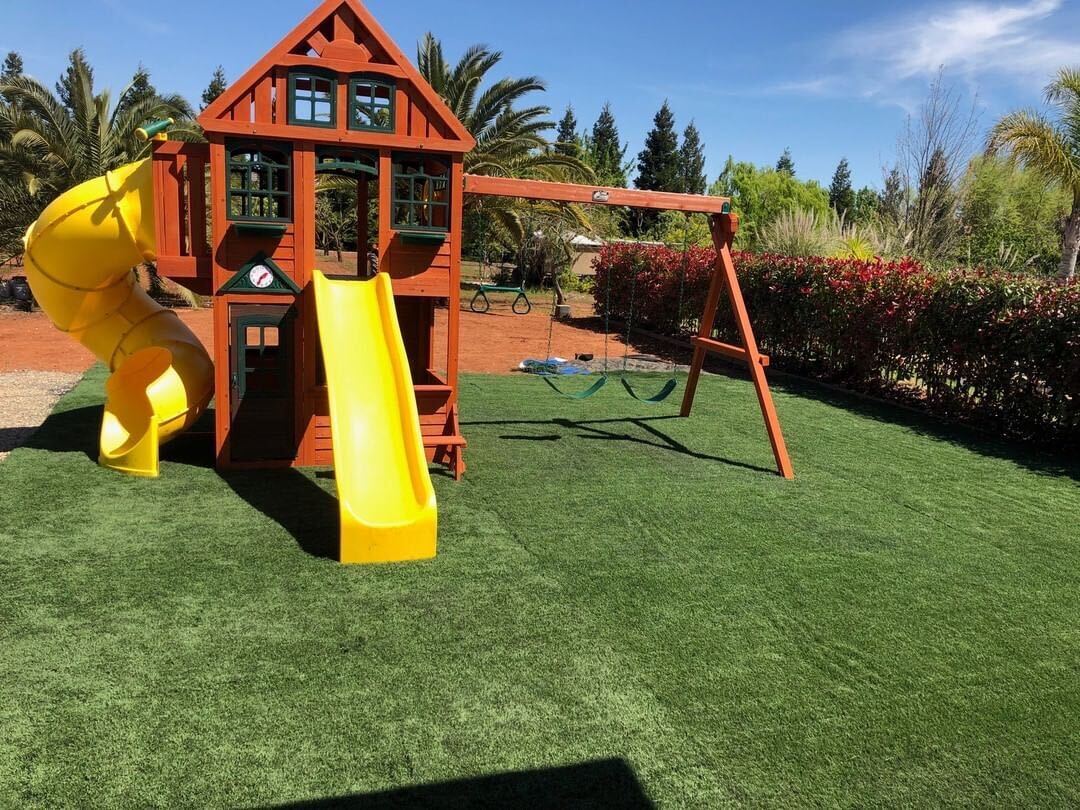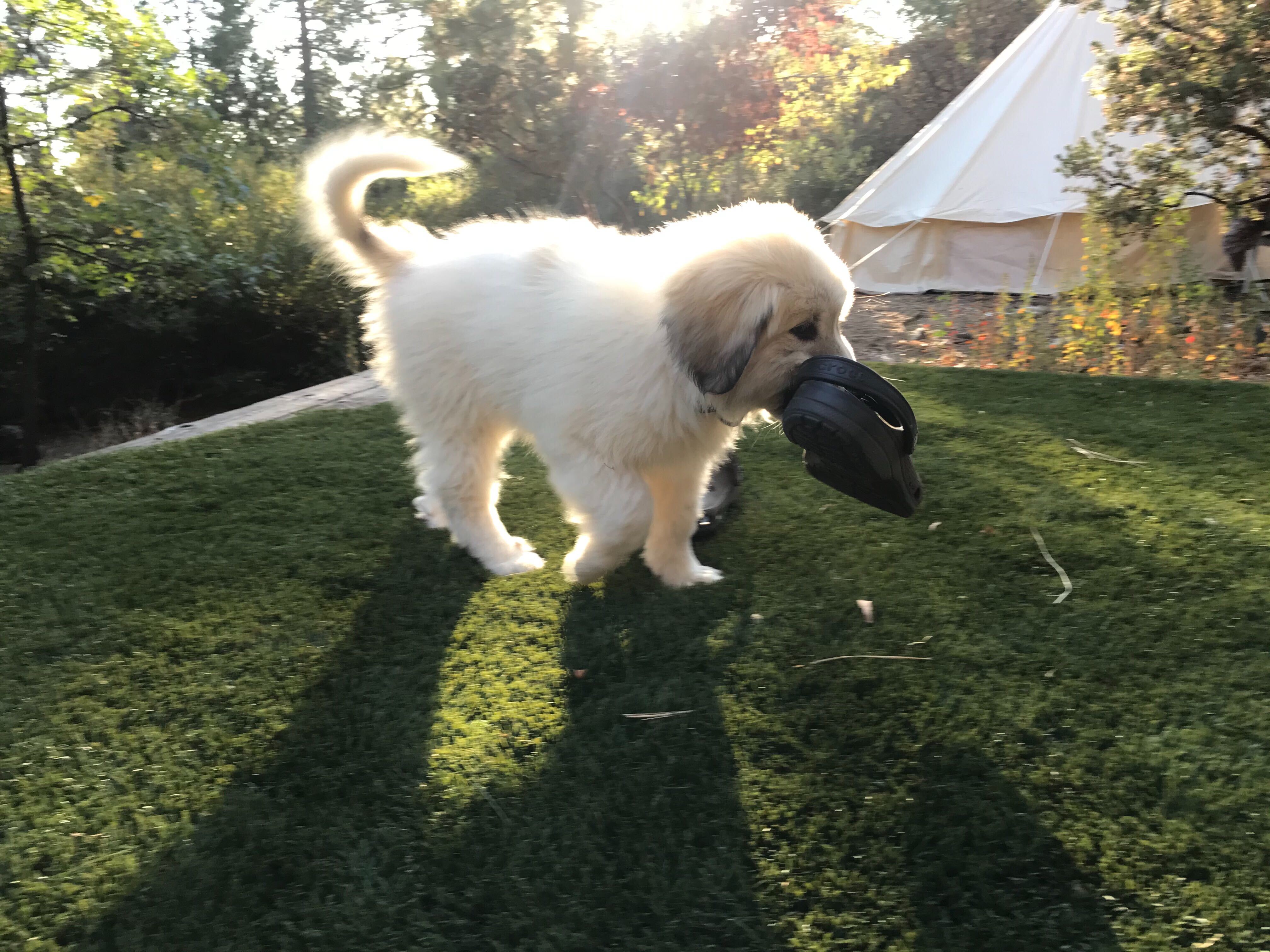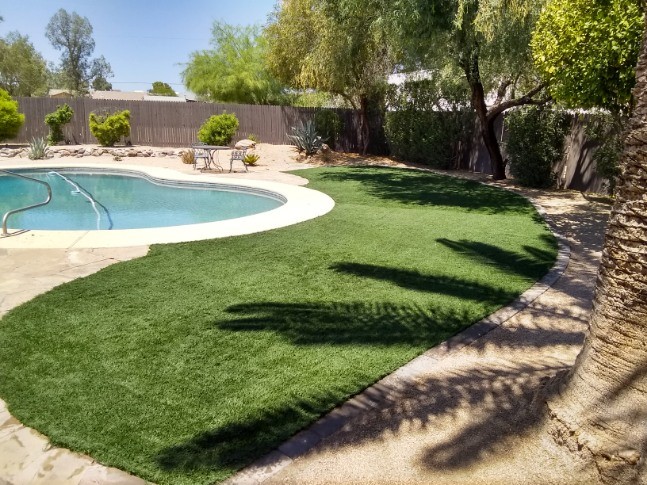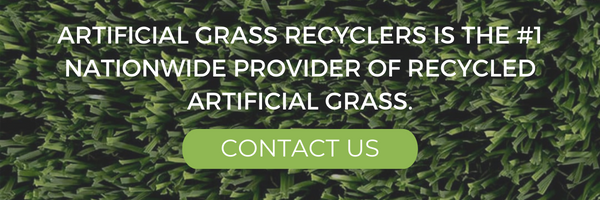Artificial turf is a surface material made to look like grass. It is lower maintenance than grass, but just as attractive – from a distance, you often can’t even tell the difference between grass and turf. Often made of nylon, polyester, or both, it is long lasting, durable, and convenient and while most people associate turf with indoor and outdoor athletics, it actually has a variety of uses in a multitude of situations.
Residents of RV parks, for example, can benefit from the flexibility of artificial turf. Because RV parks offer lots that are smaller than traditional yards, they can benefit from the flexibility and relative ease of artificial turf. Residents of RV parks are often a mix of transient and permanent, which means that some lots may have a high turnover, while others may see the same guests for months or even years. While live grass may, in these situations, be left to extreme neglect and become an eyesore, artificial turf may provide a uniform look for the RV park that doesn’t require much from either temporary or long-term guests. Read on for some creative uses of artificial turf in RV parks!
RV Park Landscaping
While live grass needs to be watered, fertilized, and mowed, artificial turf requires virtually no maintenance. Owners of RV parks will appreciate the bright, springy look of artificial turf that won’t fall prey to weeds, moles, clover, and weeds, or drought. It never becomes overgrown, nor does it die and become brown in the heat of the summer. Instead, it will be green and inviting, giving a homey, uniform look to the RV park that will attract visitors and make residents feel at home year-round.

Playground Spaces
Many RV parks offer green spaces for children of tenants to play. Because the lots are often smaller than single-family home lawns, a place for younger residents to play is a must in an RV park. But maintaining a large field of live grass can be inconvenient and costly for RV park owners and managers. Instead, consider carpeting the play spaces (both indoor and outdoor!) with artificial turf. It will last longer, be easier to maintain as it requires no mowing or watering, and will provide a soft, safe, injury-reducing surface for children to play on.

Pet Spaces
Many RV residents may also have pets, but insufficient yards for their pets to exercise. As a result, one amenity that many RV parks offer are designated pet spaces Artificial turf is ideal for these pet spaces! Turf is gentle on the pets’ feet, and virtually indestructible. RV park managers and owners won’t have to worry about pets tearing up the grass or making the fields a muddy mess. Instead, the pet spaces will always look clean, green, and inviting thanks to artificial turf.

Pool Areas
Many RV parks offer residents a swimming pool area for the warm summer months. And while in many pools, you may be used to seeing concrete surround or natural grass surround, a better choice may actually be to landscape the pool area with artificial turf. Grass can become worn, and frequently traversed paths may become muddy and essentially grass-less. Additionally, people lounging by the pool may not want to deal with mowers or, worse, grass that sticks to their wet bath suits. Artificial turf is an ideal and attractive alternative that will circumvent these inconveniences while creating a safe, slip-free surface.
Patios and Outdoor Spaces
Individual residents – especially permanent residents – may wish to expand their living space by adding a small patio or deck to their RV. Artificial turf is perfect for these areas, as well. They add a fresh, bright look to the patio, are durable, and easy to clean. They are also friendlier for the hot weather months – residents won’t have to worry about a scalding hot concrete patio beneath their feet when they have soft, cool artificial turf to relax on!
Disguising Outdoor Storage
Storage space is at a premium in an RV park! Whether you’re an individual RV resident or the manager or owner of an RV park, you are sure to have outdoor storage bins, sheds, wood stacks, or areas in which you process compost. By lining these spaces, boxes, or bins with artificial turf, you are covering up any unsightly areas while adding to the general tidy, bright ambiance of your plot. Additionally, walls or fences – if you have them – can be covered with artificial turf to create privacy in a bush-like appearance. This will make your outdoor space very appealing to spend time in and may become part of your day-to-day activities.
Interior Decorations
Artificial turf isn’t only for outdoor use, though! It can also be a cost-effective, bright, and cheerful alternative to carpeting. It is easier to maintain, harder to stain, and may brighten up the often smaller interiors of RVs. It can offer a pop of brightness to a smaller, darker interior. It can also alleviate the winter blues by offering a taste of summer right in your living room!
Conclusion
Life in an RV park can be convenient, but sometimes cramped. Space is at a premium. But artificial turf can add a bright, uniform look to RV spaces. From parks to playgrounds, pools to dog runs, common picnic areas to private patios, there is nothing that artificial turf can’t offer! Far from simply being an athletic accessory, artificial turf offers a safe, gentle, and comfortable indoor or outdoor flooring option. It is bright, beautiful, and low-maintenance: the perfect combination for RV park owners, residents, and managers. If you are considering investing in an RV space for the long haul, or you are stopping at one during your vacation travels, artificial turf is sure to augment the ambiance and enhance your RV park experience. Be sure to ask the manager of the RV park what type of artificial turf they have if it’s already there before you plan to move in.
February 1, 2017


